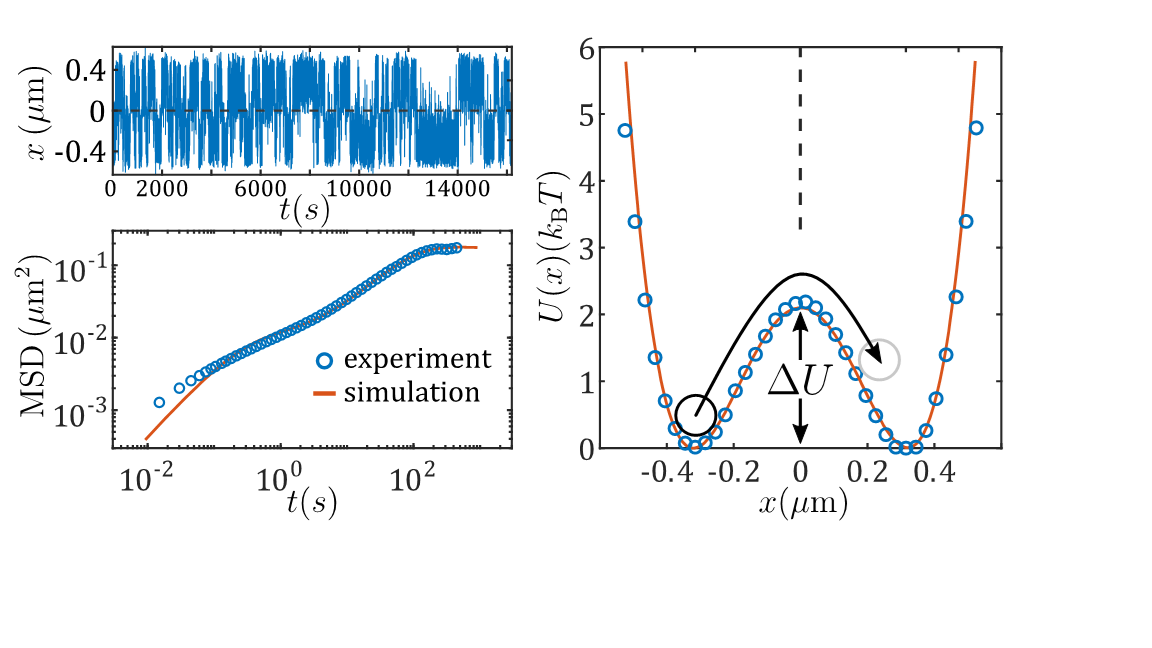
Barrier crossing in a viscoelastic bath
The hopping of an overdamped particle across a potential barrier, as originally considered more than 100 years ago by Svante and Arrhenius to understand chemical reaction rates is one of the oldest and most important problems in statistical physics...
The hopping of an overdamped particle across a potential barrier, as originally considered more than 100 years ago by Svante and Arrhenius to understand chemical reaction rates is one of the oldest and most important problems in statistical physics. In addition to explaining the reaction kinetics in chemical systems, it is of central importance to understand reaction rates governing the dynamics in many processes in physical, chemical, and biological sciences.
While the thermally activated crossing of energy barriers in memory-free, i.e., viscous solvents is well understood, only little is known when non-Markovian baths are considered. Non-Markovian behavior is typically encountered in viscoelastic fluids, which are quite common in biological (blood, mucus) and technical systems (polymer solutions, micellar solutions, concentrated colloidal suspensions etc.). The existing non-Markovian rate theory (NMRT) describes the hopping dynamics by a single time scale which exhibits an exponential dependence on the barrier height. The validity of NMRT in practical (experimental) conditions is, however, poorly explored.
In a combined experimental and numerical study, we demonstrate that the hopping dynamics of a Brownian particle in a viscoelastic bath is - opposed to NMRT - governed by two time scales, which can differ by more than two orders of magnitude. Remarkably, only the larger time scale exhibits a barrier height dependence, while the shorter one is rather independent of it. The short time scale, which is here experimentally observed for the first time, is caused by the excitation of the bath by the particle’s motion. When released, the energy temporarily stored in the bath promotes a fast surmounting of the potential barrier. Our results, which are in excellent agreement with a simple two-particle model, thus directly demonstrate that comparatively large energies can reversibly be stored in a complex bath.
